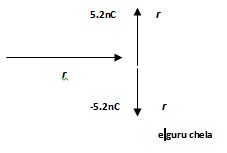Significant figures
The number of meaningful numbers in a measurement is called the number of significant figures of the number like , consider what happens when measuring the distance an object moved using a tape measure . The tape measure is likely broken down into smallest units of millimeters.
Therefore, no other way that you can measure with a precision greater than a millimeter. If the object moves 43.986523 millimeters, so , we can only tell for sure that it moved 43 millimeters .
The pinpoint movement of a normal sized object down to a millimeter would be a pretty impressive achievement, actually. trying to measure the motion of a bike to the millimeter, and will see that in general it is not necessary. In the cases where such precision is necessary, we will be using tools that are much more wordly than a tape measure.

When are digits significant
When we have non zero digits so it's called as significant like if we have 56 so it is two digit significant and if we have 45.9 then it is called s three digit significant .
When we have zeroes, then the situation is more complicated Leading Zeros, when zeros placed before any other digits are not significant; 0.069 has two significant digits.
b. Captive Zeros, when zeros placed between other digits are always significant; 209 kg has three significant digits.
c. Trailing Zeros, when zeros placed after other digits but behind a decimal point are significant; 8.20 has three significant digits.
d. Zeroes at the end of a number might not significant if they are not behind a decimal point.
For example, In the number 2003, it is not clear if the zeroes are significant or not. The number of significant digits in 2003 is at least two, but could be three or four. To avoid uncertainty, use scientific notation to place significant zeroes behind a decimal point:
2.008 X 104 has four significant digits
2.08 X 1 05 has three significant digits.
